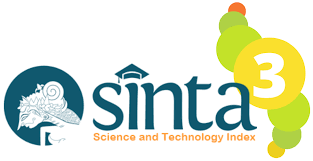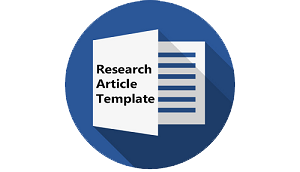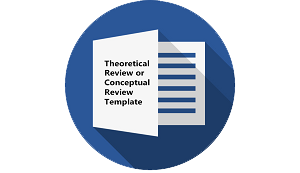Strategi Komunikasi Orangtua Dalam Mengembangkan Kemampuan Mean of Length Utterance (MLU) Pada Anak Gangguan Pendengaran Pengguna Cochlear Implant (CI).
DOI:
https://doi.org/10.30957/lingua.v21i1.907Keywords:
Strategi komunikasi, Mean of Lenght Utterance, Cochlear implantAbstract
Penelitian ini bertujuan untuk, menganalisa strategi komunikasi orangtua dalam mengembangkan kemampuan Mean of Length Utterances (MLU) yang memiliki anak dengan gangguan pendengaran pengguna Cochlear Implant (CI). Metode penelitian ini yaitu deskriptif kualitatif. Data dikumpulkan melalui wawancara kepada orangtua, serta observasi pada anak dan mengambil sampling 75-100 ujaran spontan anak gangguan pendengaran pengguna cochlear implant (CI). Hasil penelitian menunjukkan bahwa orangtua menggunakan strategi berkomunikasi dominan secara verbal dengan melakukan pengulangan dan aktif setelah anak melakukan latihan mendengar, selain itu faktor usia anak menerima implan koklea juga menentukan keberhasilan dalam meningkatnya panjang rata-rata ujaran atau mean of length utterance (MLU).
Downloads
References
cochlear implantation for child and family: parental perspectives. Deafness & Education International, 10(3), 120-142.
Bagatto, M. P., & Tharpe, A. M. (2014). Decision support guide for hearing aid use in
infants and children with minimal/mild bilateral hearing loss. In A Sound Foundation through Early Amplification: Sixth International Conference Proceedings (pp. 145-151). Stäfa, Switzerland: Phonak AG.
Binos, P., Nirgianaki, E., & Psillas, G. (2021). How effective is auditory–verbal therapy
(AVT) for building language development of children with cochlear implants? A systematic review. Life, 11(3), 239.
Crystal D. Roger Brown, A first language: the early stages. Cambridge, Mass.: Harvard
University Press, 1973. Pp. xi + 437. Journal of Child Language. 1974;1(2):289-307. doi:10.1017/S030500090000074X
Dev, A. N., Adhikari, S., Lohith, U., Dutt, C. S., & Dutt, S. N. (2019). Assessment of
quality of life outcomes with the glasgow children's benefit inventory following cochlear implantation in children. The Journal of Laryngology and Otology, 133(9), 759-763. doi:https://doi.org/10.1017/S0022215119001555
De Raeve, L., Marinela-Carmen Cumpăt, Aimée, v. L., Isabel, M. C., Maria Assunção
Matos, João, C. D., . . . Rădulescu, L. (2023). Quality standard for rehabilitation of young deaf children receiving cochlear implants. Medicina, 59(7), 1354. doi:https://doi.org/10.3390/medicina59071354
Dlamini, S. P. (2021). Sign language challenges encountered by deaf learners born to
hearing parents (Doctoral dissertation, University of Pretoria (South Africa)).
Flaherty M. What We Can Learn From Hearing Parents of Deaf Children. Australasian
Journal of Special Education. 2015;39(1):67-84. doi:10.1017/jse.2014.19
Flipsen Jr, P., & Kathleen Kangas PhD, C. C. C. S. L. P. (2014). Mean length of utterance
(MLU) in children with cochlear implants. The Volta Review, 114(2), 135.
Shojaei E, Jafari Z, Gholami M. Effect of Early Intervention on Language Development
in Hearing-Impaired Children. Iran J Otorhinolaryngol. 2016 Jan;28(84):13-21. PMID: 26877999; PMCID: PMC4735612.
Huber, M. (2022). Cochlear implant-specific risks should be considered, when assessing
the quality of life of children and adolescents with hearing loss and cochlear implants–not just cochlear implant-specific benefits–Perspective. Frontiers in Neuroscience, doi:https://doi.org/10.3389/fnins.2022.985230
Kenneth G. Shipley - Julie G. McAfee - Assessment in Speech-Language Pathology - A
Resource Manual (2021)
Mortazavi, Z., & mortazavi, S. (2017). 26: AUDITORY-VERBAL THERAPY (AVT)
AND EVIDENCE-BASED PRACTICE (EBP). BMJ Open, 7 doi:https://doi.org/10.1136/bmjopen-2016-015415.26
Monshizadeh, L., Vameghi, R., Sajedi, F., Yadegari, F., Hashemi, S. B., Kirchem, P., &
Kasbi, F. (2018). Comparison of social interaction between cochlear-implanted children with normal intelligence undergoing auditory verbal therapy and normal-hearing children: A pilot study: MJO. The Journal of International Advanced Otology, 14(1), 34-38. doi:https://doi.org/10.5152/iao.2018.3663
Percy-Smith, L., Tønning, T. L., Josvassen, J. L., Mikkelsen, J. H., Nissen, L., Dieleman,
E., ... & Cayé-Thomasen, P. (2018). Auditory verbal habilitation is associated with improved outcome for children with cochlear implant. Cochlear Implants International, 19(1), 38-45.
Roberts, M. Y. (2019). Parent-implemented communication treatment for infants and
toddlers with hearing loss: A randomized pilot trial. Journal of speech, language, and hearing research, 62(1), 143-152.
Sinaga, H. P., Simanullang, A. R., Pulungan, A. S., & Harahap, M. (2023). Deskripsi
Masalah Anak Tuna Rungu di SD Swasta At-Taufiq. Al-Hayat: Natural Sciences, Health & Environment Journal, 1(2), 69-79.
Sholeha, M., Nuryani, N., & Hudaa, S. (2022). Faktor-Faktor yang Memengaruhi Rata-
Rata Panjang Ujaran Anak (Suatu Tinjauan Psikolinguistik). Aksara, 34(2), 254-263
Szagun, G., & Rüter, M. (2009). The influence of parents’ speech on the development of
spoken language in German-speaking children with cochlear implants. Revista de Logopedia, Foniatria y Audiologia, 29(3), 165-173.
Shivaprakash, S., & Castro, N. O. (2019). Performance of hearing-impaired children with
hearing aid and cochlear implant in auditory verbal therapy. Scholarly Journal of Otolaryngology, 2(3), 10-32474.
Terry, J. (2023). Enablers and barriers for hearing parents with deaf children:
Experiences of parents and workers in wales, UK. Health Expectations, 26(6), 2666-2683. doi:https://doi.org/10.1111/hex.13864
Tavakoli, M., Jalilevand, N., Kamali, M., Modarresi, Y., & Zarandy, M. M. (2015).
Language sampling for children with and without cochlear implant: MLU, NDW, and NTW. International journal of pediatric otorhinolaryngology, 79(12), 2191-2195.
Downloads
Published
How to Cite
Issue
Section
License
Authors who publish with this journal agree to the following terms:
- Authors retain copyright and grant the journal right of first publication with the work simultaneously licensed under a Creative Commons Attribution-ShareAlike 4.0 International License that allows others to share the work with an acknowledgement of the work's authorship and initial publication in this journal.
- Authors are able to enter into separate, additional contractual arrangements for the non-exclusive distribution of the journal's published version of the work (e.g., post it to an institutional repository or publish it in a book), with an acknowledgement of its initial publication in this journal.
- Authors are permitted and encouraged to post their work online (e.g., in institutional repositories or on their website) prior to and during the submission process, as it can lead to productive exchanges, as well as earlier and greater citation of published work (See The Effect of Open Access).















